Constructed by the Ancient Egyptians by decree of the Pharaoh. These were built for religious purposes and to create work for citizens during flood season.
Egyptian Pyramids
This dynasty lasted from 1755BC to 1050BC. It was primarily a nation of farmers living near water sources, however the people were also creative sculptors/metalworkers. This dynasty put an emphasize on family importance, including ancestor worship, while also practicing human sacrifice.
Shang Dynasty
Who was the founder of Jainism?
Mahavira
The region between the Tigris and Euphrates Rivers.
Mesopotamia
A worldview that is centered on the idea of Western civilization being the "cradle of civilization."
Eurocentrism
Is this the correct scantron for your test and what is the date and time of your test?
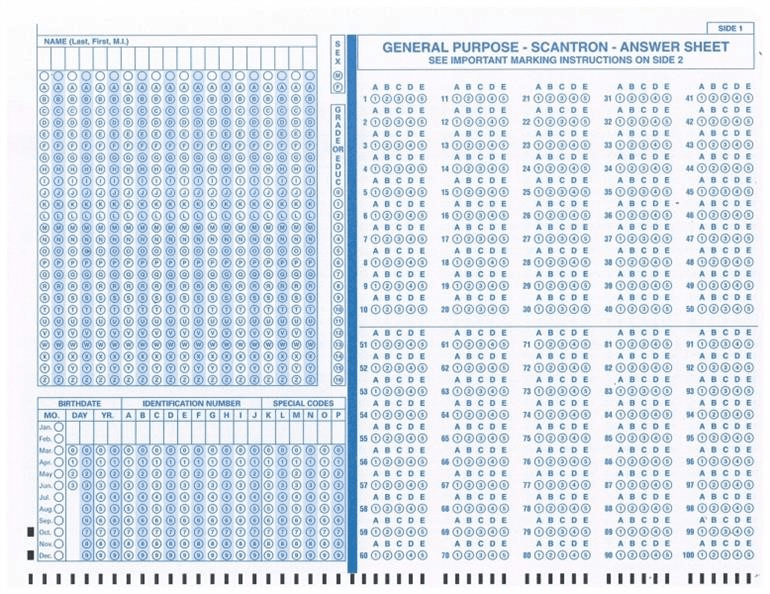
You need a blue scantron for your test. The test is Friday, September 24th 2021. It begins at 11:00am EST. Don't be late or you might have to take a written test instead!
Egyptian Pharaoh who noted for abandoning Egypt's traditional polytheism and introducing Atenism, or worship centered around Aten.
Akhenaten
An ethical philosophy (rather than a religion) that became popular in Ancient China. This philosophy put importance on human behavior, talent (rather than noble birth), knowledge, and relationships.
Confucianism
What are the classes society is divided into according to the Caste System?
- Brahmin (priestly)
- Kshatriya (Warrior)
- Vashiya (merchant)
- Shudra (servant)
Bonus 100pts: - Outside/“The untouchables”
Set of rules that established standards for commercial interactions and set fines/punishments to meet the requirements of justice.
Code of Hammurabi
In this Era, people began altering the environment to suit their needs. Permanent settlements rose up and diverse skills began to develop.
Neolithic Era
This is King Solomon. Why is he important to the study of Hebrew history?

Solomon was the successor to King David. He was considered to be extremely wise and wealthy. During his reign, Solomon would finish the first temple in Jerusalem for the Jewish people to worship in. After Solomon's death, the "Promised Land" of Israel would be divided into two kingdoms, Israel and Judah.
Notable female ruler in Ancient Egypt. She was the principal wife of Thutmose II. Hatshepsut initially began her rule as regent to Thutmose III, but was eventually seen as King. Depictions of Hatshepsut often include male features like a beard. 
Hatshepsut
How was the Zhou Dynasty different from the Shang Dynasty?
The Zhou Dynasty overthrew the Shang Dynasty and claimed a "mandate of heaven" made the Zhou people the rightful leaders of China. The Zhou Dynasty retained much of Shang culture, but changed how government was run, creating an administration system for the empire. The king would put surrogate leaders in charge of outlying areas of his empire.
Large amount of hymns and poems that originated in Ancient India and were seen as inspired religious texts. These texts allow historians to better understand this time period.
The Vedas
This civilization existed in the Mesopotamian region around 3000BC. It was defined by its 12 city-states and was known for cuneiform writing, a lunar calendar, currency, and mathematics.
Sumeria
This Era lasted from 1 million years ago to 10,000 BC. People obtained food through hunting & gathering. Populations of groups typically remained low.
Paleolithic Era
What is this poem and why is it important to the study Hinduism?
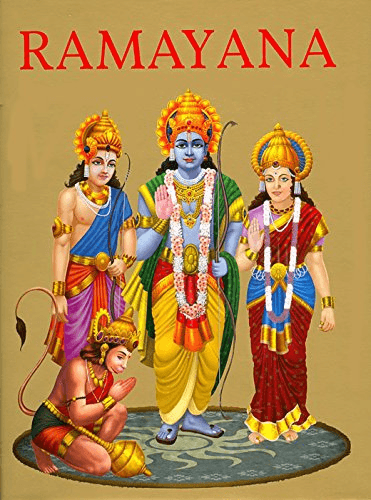
This poetic story is the Ramayana. It is a story from Ancient India that follows the saga of Rama and Sita. This saga provides an example of behavior standards for the general public. The Ramayana is significant because most of the population in Ancient India were restricted from accessing the Upanishads, however these poems were based off the lessons from the Upanishads and were accessible.
Pharaoh during the New Kingdom. Ruled from 1303BC-1213BC. This pharaoh is believed to be the one who was ruling when the Exodus of the Hebrew people occurred.
Ramses II
The central concept of this philosophy is finding "the Way." Humans should be more in tune with nature because nature is seen as the original simplicity. Humans are the only creatures who fail to follow "the Way."
Daoism
These texts form the foundations of Hinduism. They deal with ideas such as:
-Reconceptualization of the Afterlife
-Brahman
-Power through Knowledge
The Upanishads
An epic poem from ancient Mesopotamia. The epic is often regarded as a foundational work in the tradition of heroic sagas.
The dispersion of Israelites or Jews out of their ancestral homeland and their subsequent settlement in other parts of the globe.
The Jewish Diaspora
What is this form of writing called and what ancient civilization used it?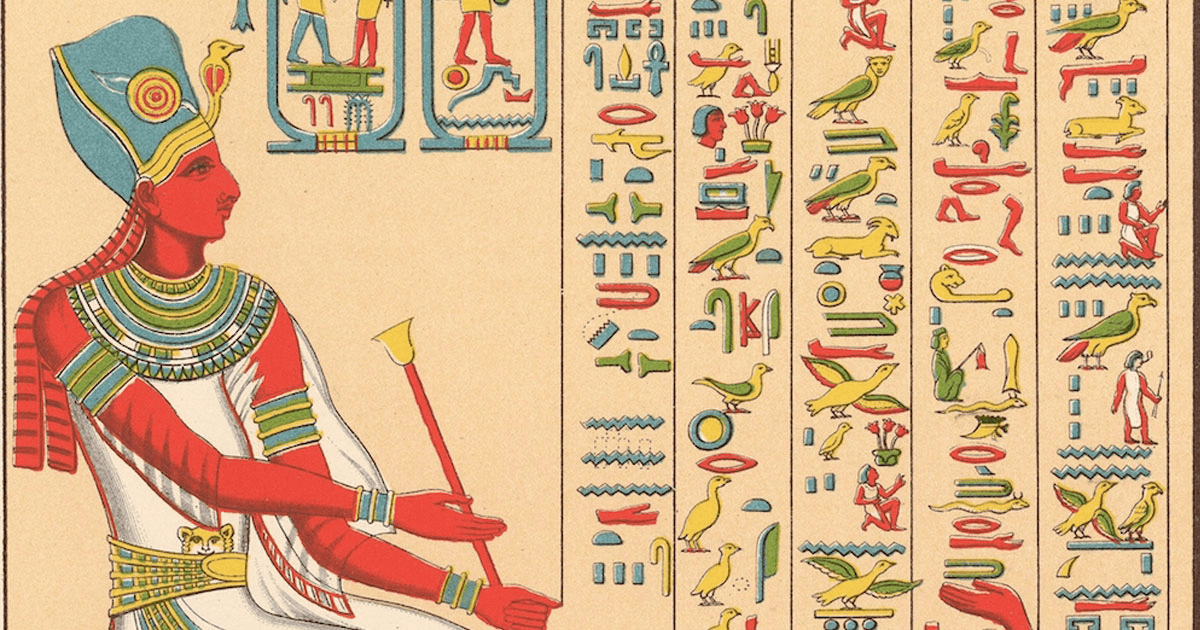
Hieroglyphics were used by the Ancient Egyptians
Formal Egyptian writing system
Hieroglyphics
This dynasty overthrew the Zhou dynasty. Under the emperor of this new dynasty, government would become more centralized, feudal institutions would be extinguished, China would be unified, and ideas like Confucianism would be outlawed.
Qin Dynasty
How was Buddhism different from Hinduism and Jainism?
Buddhism differed from Hinduism and Jainism in several ways. Buddhism was less complicated than Hinduism and nowhere near as extreme as Jainism. Buddhism also departed from the Upanishads and the Caste System.
What is the name for the type of writing used by Sumerian Civilization?
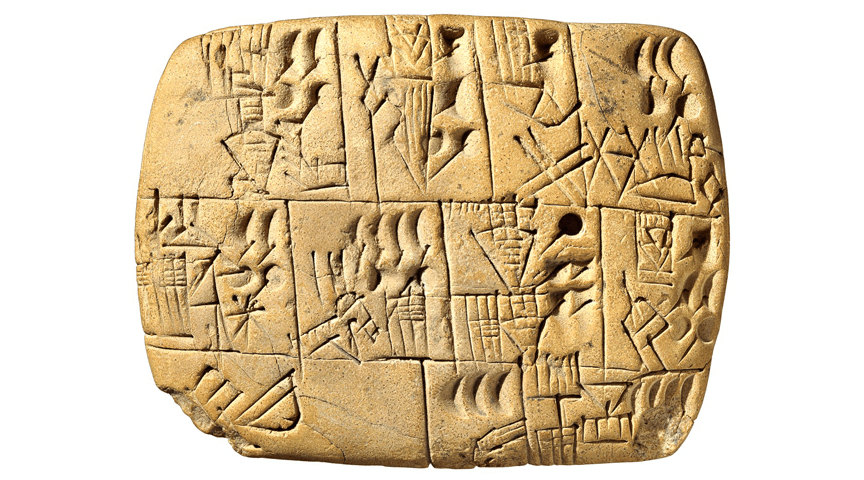
cuneiform
What is the highest Universal Principle/the Ultimate Reality in the universe typically referred to as in Hinduism?
Brahman
What is depicted in the following image and why is it important?
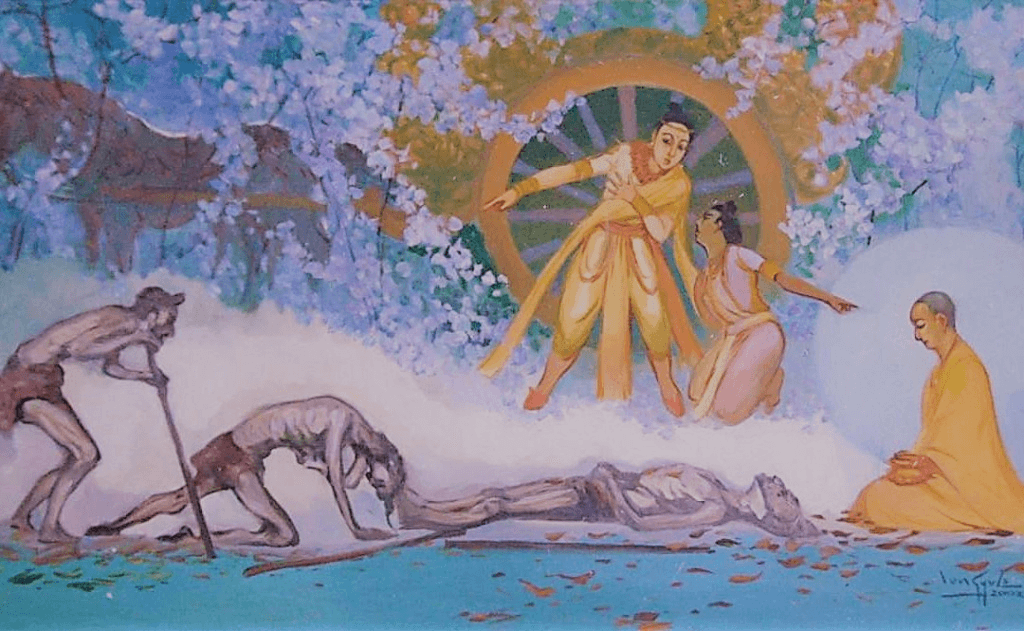
The image depicts the 4 sights seen by Buddha. These 4 sights were illness, age, death, and prayer. This is important because, according to Buddhism, these sights helped lead Buddha down the path to discovering enlightenment.
Name several geographical advantages Egyptian Civilization had.
Example answers: Desert, Ocean, and other natural boundaries for protection. Nile river provided fertile soil.
This philosophy backed up totalitarian ideas of the Qin emperor. This philosophy believed humans were selfish and that a strong state needs severe laws in order to create the greatest good. Reward/punishment systems were also believed to be useful.
Legalism
He was a leader of India during the Mauryan Dynasty. After seeing the aftermath of a bloody battle, he converted to Buddhism. This leader would eventually implement Buddhist ideas into his role and unify India thru diplomacy rather than war. His rule would be one similar to a benevolent autocracy.
Ashoka Maurya
The conqueror of Ancient Sumerian Civilization around 2500 BC.
Sargon "the Great" of Akkadia
A form of exclusive monotheism in which God is the source for one standard of morality, concerned with the actions of humans, and guides humanity through ethical principles.
ethical monotheism
This is an image of Qin Shi Huangdi. When Qin came to power he outlawed philosophies like Confucianism. What was Qin's reasoning for this?
As the new ruler of China, Qin wanted absolute authority and no criticism. He also despised the moral restraints put on by Confucianism.